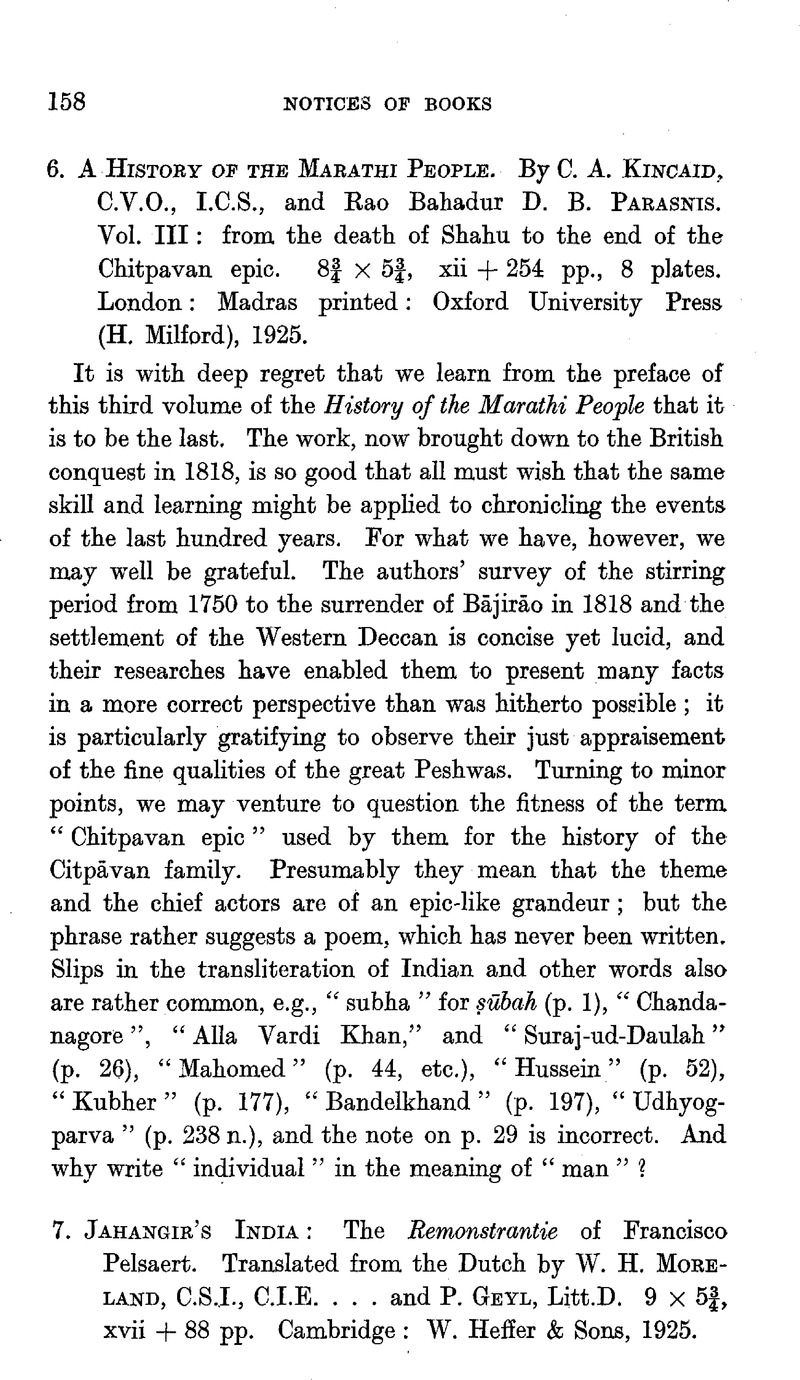No CrossRef data available.
Published online by Cambridge University Press: 15 March 2011

1 The word tzierila (p. 18) seems to represent the Hindi jurelā, a kind of rice, though it might, also stand for the Marathi jirēḷī, a sort of plantain ; pipel (ibid.) looks like the pippali or “ long pepper ” (Piper longum, Linn.). In koilte kie or kuitekie (p. 45) I suspect kētakī, the fragrant screw-pine (Pandanus odoratissimus, Linn.). Poncie (p. 33) is obviously Punch. Bessiebrara (ibid.) is possibly Bijbrör, and Pampoer is Pampur. The o“ Raja Piepal ” on p. 59 seems to be not a Raja, but the State of Rajpipla.